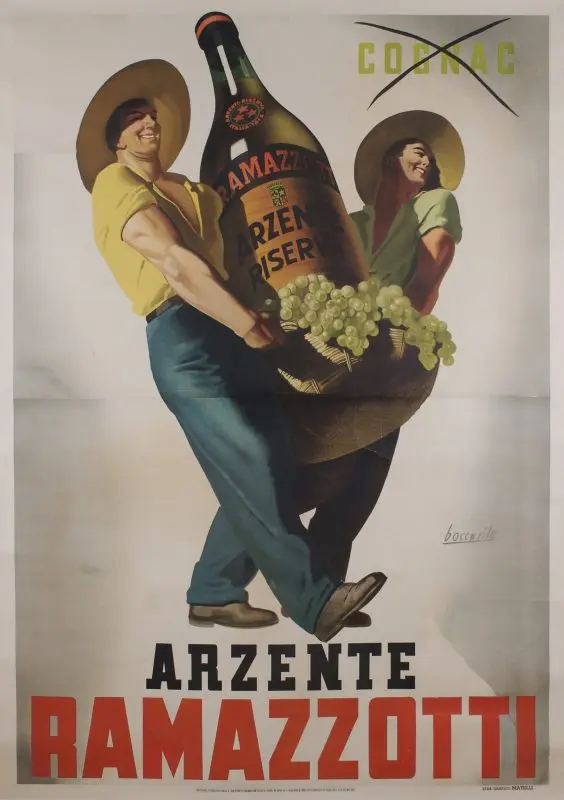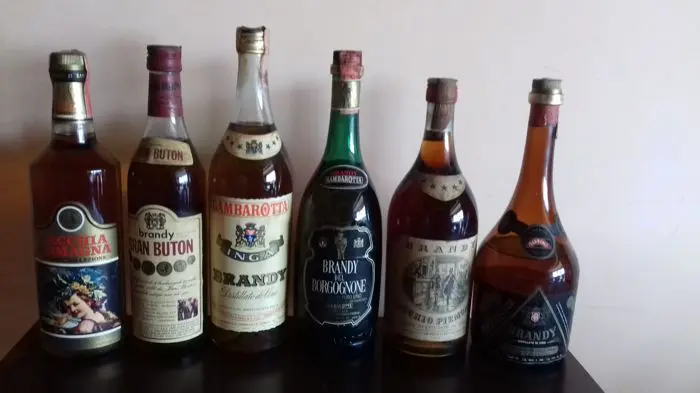Contents
In a broad interpretation, the term “brandy” unites all fruit distillates, from elite cognac or calvados to inexpensive grappa. But the term “Italian brandy (brandy italiano)” still means not grappa, but noble grape distillates – analogues of French cognacs.
In Italy, grape distillates are called arzente, which is an outdated version of the word ardente, which means “fiery”. The Italians learned how to distill wine in the XNUMXth century, and the resulting moonshine was called “living water” (aqua vitae). At first, the distillate was used only by alchemists for the preparation of medicines, but after several centuries, the scope of “living water” expanded.
The first distillery was founded in Bologna in 1820 by winemakers Filippo Sassoli de’ Bianchi and Jean Buton. In 1845, the Milanese distillery Fratelli Branca Distillerie launched the Stravecchio Branca brandy, and in 1939 Jean’s descendants founded the Vecchia Romagna brand, which is considered the most famous representative of Arcente.

Until 1948, Italian brandy was called “cognac” following the example of its French counterpart, but then the Italians rightly gave this name to the French, returning to the old artenta.
Despite the fact that Italy is proud of its “living water”, the quality of the local wine distillate remains average compared to its counterparts – Spanish sherry brandies and French cognacs, so Italian brandies are not so well known in the world market.
Production features
The grape variety depends on the producer. For example, Vecchia Romagna is made from Trebbiano berries harvested in the Emilia-Romagna region. First, wine is made, then it is distilled, cutting off the “heads” and “tails”. Some distilleries use traditional alambicas, while others prefer modern pot stills. Distillation can be single or double, continuous or batch – all this is at the discretion of the manufacturer, there are no uniform standards. After distillation, brandy is aged in wooden barrels, the aging period also depends on the brand.
According to Italian law, brandy must be made only on the basis of local wine and aged in oak barrels for at least 1 year.

How to drink Arcente
Italian grape distillates are drunk, like French cognac, from glasses tapering upwards – “snifters” and “tulips”. Arcente is served as a digestif after a hearty meal, with bitter chocolate or coffee.
The drink is not cooled, since at a low temperature the bouquet of aromas will not open, on the contrary, the glass can be slightly warmed in the palms. The ideal serving temperature for Italian brandy is +18-20°C.

Famous brands of arcente
- Vecchia Romagna – 38%, it can be aged (riserva, aged from 10 to 35 years) and regular, three-year-old.
- Stravecchio Branca – 38%, made on the basis of a blend of aged wines, the bouquet has nuances of dried fruits, citruses, spices, vanilla, flowers, honey.
- Tosolini Vecchio – 40%, produced on the basis of red wines from Merlot, Cabernet and Refosco grapes. The bouquet has tones of cream soda, vanilla, tobacco, honeycombs, and spices.
- Nardini Brandy – 42%, in a bouquet of toast, old leather, smoke.
- Bellavista – 40%, distillate based on Chardonnay grapes, produced in classic copper alambicas, aged in small white oak barrels. The aroma is saturated with nuances of honey, vanilla, flowers, ripe fruits, nuts, dates, plums and tobacco.
- Jacopo Poli – 40%, made on the basis of a blend of millesim wines, the aroma contains notes of tea, creamy toffee, dried fruits, hay.
- Brandy italiano di Poli – 40%, wine distillate with a spicy taste, tones of coffee, nutmeg and vanilla.

Other fruit brandies from Italy
This category includes distillates based on fruit brews, not grape wine. For instance:
- Pere di Poli – 40%, made from Williams pears, has a rich “duchesse” aroma. The recommended serving temperature is +10-15 °С;
- Lamponi di Poli – 40%, raspberry-based distillate.









